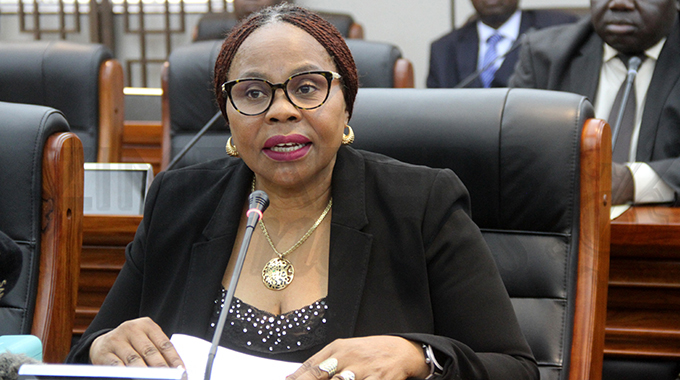
Blessings Chidakwa Herald Correspondent
The maize producer price has been increased to $6 958 a tonne from $4 000, for the present marketing season, with that for traditional grains increased to $7 260.
Further, a recovery plan for maize, wheat and soyabean production, which seeks to achieve over US$8 billion gross agriculture production value by 2023, has been introduced to increase output.
Information, Publicity and Broadcasting Services Minister Monica Mutsvangwa announced the prices and plans in a post-Cabinet briefing yesterday.
She said Cabinet considered and approved the maize producer floor price for the remainder of the present marketing season after considering proposals from Lands, Agriculture, Water and Rural Resettlement Minister Perrance Shiri, as acting chairman of the Cabinet Committee on Food Security and Nutrition.
Cabinet agreed to the new maize producer price to encourage deliveries to the Grain Marketing Board (GMB) and for the replenishment of the Strategic Grain Reserve.
The floor price of traditional grains — generally millet, rapoko and sorghum — at $7 260 a tonne would help promote these grains in the face of climate change and health challenges related to the consumption of maize-meal.
Minister Mutsvangwa said traditional grains, which were commonly but wrongly referred to as small grains by the media, had no significant role to play in the colonial agricultural economy.
She called for the discontinuation and discouragement of the term “small grains” as Government has started promoting traditional grains.
“As Government invests in the production of traditional grains such as millet, rapoko, sorghum as well as research related to their development, we cannot continue to use the term ‘small grains’,” she said.
Farmers’ organisations immediately welcomed the decision to increase the floor price for maize and traditional grains.
Zimbabwe Farmers Union (ZFU) executive director Mr Paul Zakariya said: “This is a welcome development, but the issue of input costs still needs to be interrogated as they continue to go up. There is need for mechanisms to stabilise that.
“There is also need for Government, through its institutions like the Reserve Bank of Zimbabwe, to continue working on stabilising the economy; otherwise the maize producer price will continue to go up.”
Zimbabwe Commercial Farmers Union (ZCFU) president Mr Shadreck Makombe also welcomed the new price.
“We are happy with sensitivity of Government, but we would have expected a much higher figure considering the current environment farmers are operating under.
“But at least we are grateful since half a loaf is better than nothing,” he said.
Minister Mutsvangwa said Cabinet also considered and approved the maize, wheat and soya bean production recovery plan.
She said the recovery plan was an extract of the Agriculture and Food Systems Transformation Strategy, which seeks to achieve over US$8 billion Gross Agriculture Production Value by 2023.
The recovery plan is anchored on six factors: targeting the best farmers to produce more; ensuring agro-businesses procure at least 40 percent of raw materials through contract farming; an upgrade of the Presidential Input Support Scheme to 1,6 million vulnerable households; the creation of a Lowveld maize belt; upgrades of irrigation; and better extension services for farmers using modern technology.
The sector-led commercial contract farming programme will target 5 000 highly productive farmers in irrigated areas and promote conservation agriculture and crop diversity.
The commodity value chain financing model whereby all private sector players that get raw material directly from agriculture will be compelled to produce 40 percent of their requirements locally through contract farming,
The climate-proofed Presidential Input Support Scheme (Pfumvudza), will support 1,6 million vulnerable households to produce maize with a standardised input package of 5kg seed, and 50kg of basal fertiliser and 50kg of top dressing fertiliser.
The pre-planting producer price announcement had a bearing on planting and crop management decisions and creation of a Lowveld Maize Belt (Masvingo), Bulawayo Kraal and Kanyemba where the country can enjoy two maize cycles a year.
Irrigation development programmes will be accelerated and an extension services delivery programme will be capacitated.
This will entail increased mobility, appropriate training and equipping with digital technologies for effective backstopping and coaching of farmers, the innovation and modernisation of agriculture, resulting in the effective use of modern and smart technologies in the agriculture sector.
Minister Mutsvangwa said Cabinet acknowledged that the maize, wheat and soyabean recovery plan, if meticulously implemented, had the potential to reverse dependence on imports for the crops.
It will also mitigate the financial burden on Treasury and ultimately put the country on a trajectory to attain Vision 2030 of an upper middle income economy.
